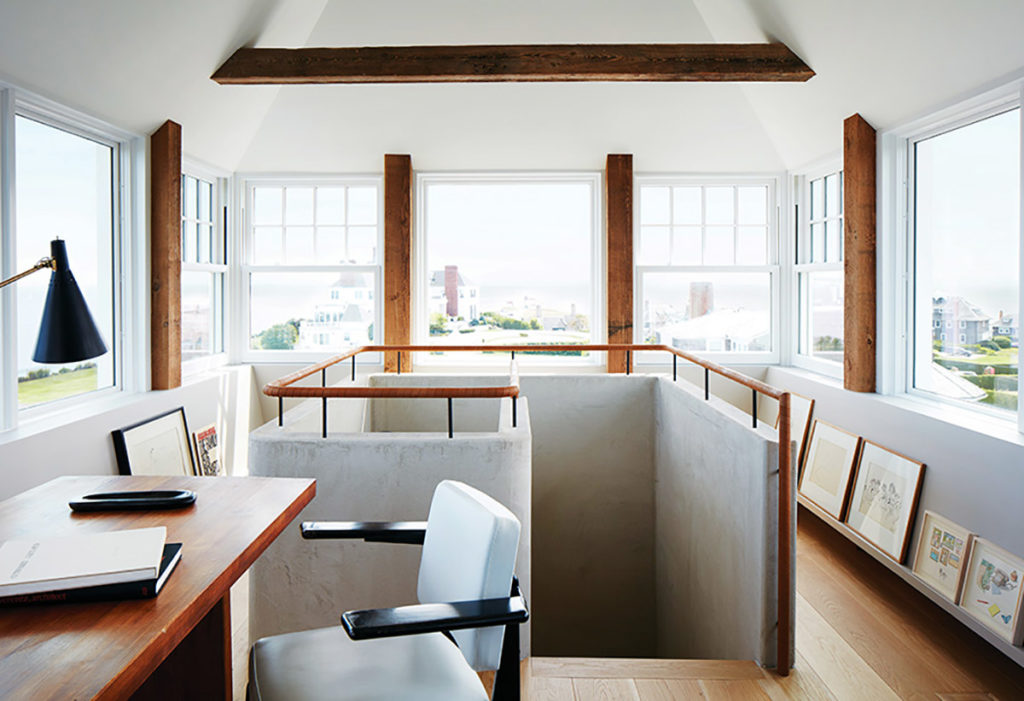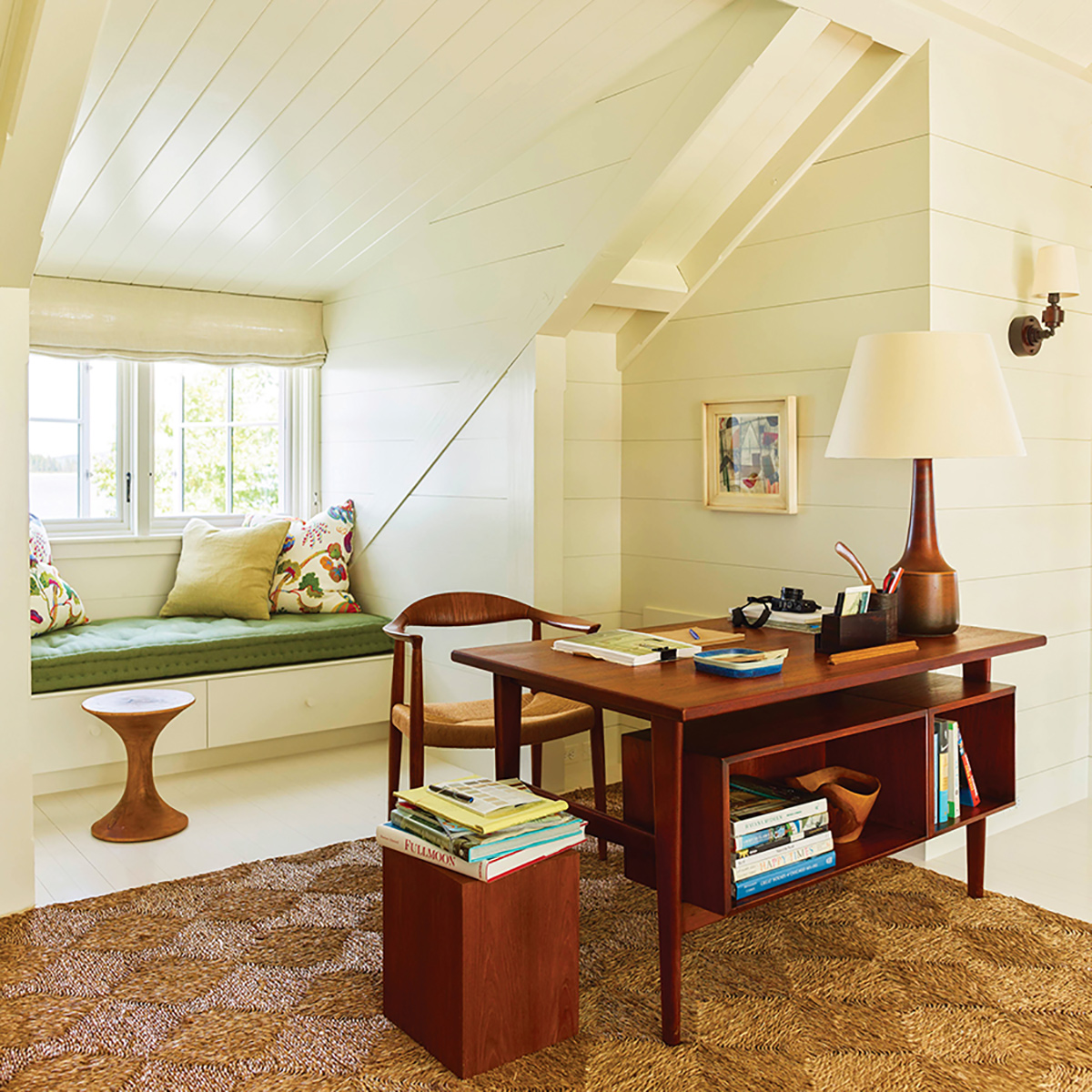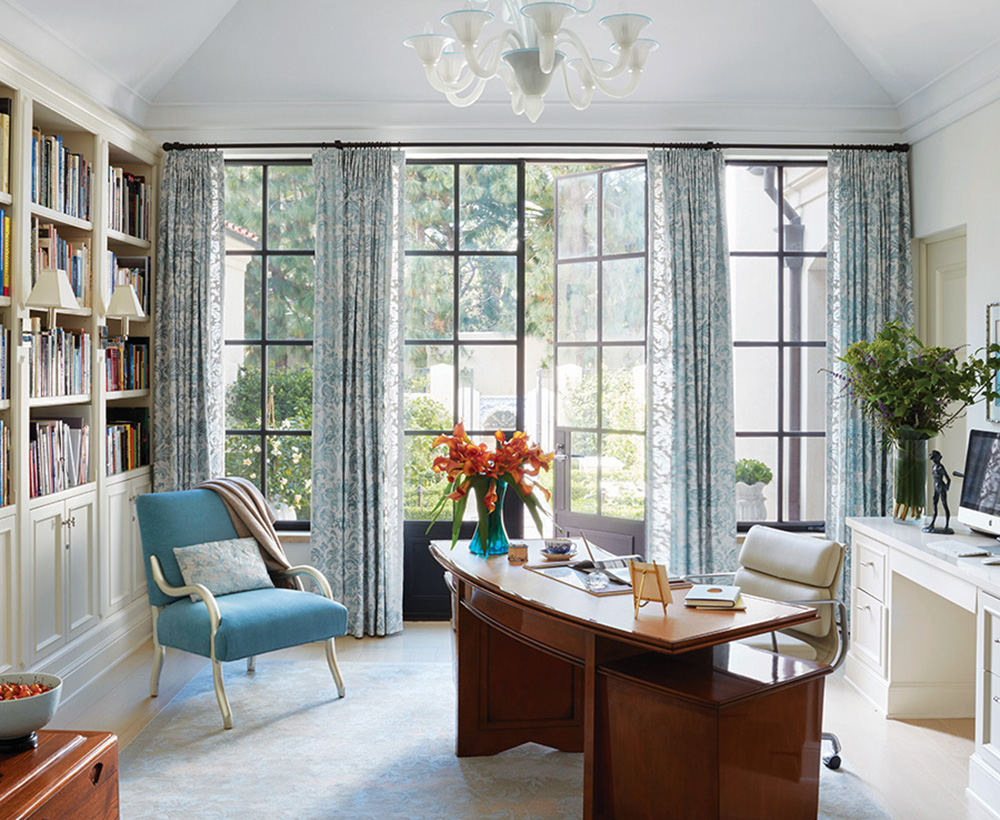The home office, a workhorse once relegated to the spare bedroom, has become the boss of the house, staking out prime space that precisely positions it to make the most of its new found promotion. More often than not, a stunning view worthy of a Fortune 500 CEO is one of its prime components.
“The idea that part of the function of a home office is to provide an aesthetically pleasing environment has become the norm,” says architect Raun L. Thorp, principal of Tichenor & Thorp Architects in Los Angeles. “I think that many more people are realizing that a beautiful workspace not only enhances their well-being, it in turn makes the work better.”
She adds that most of her clients request a garden or water view, even if it’s nothing more than a water feature outside the door or a small wall fountain on the balcony. “A water element adds a sense of space, and if there is a fountain outside, the sound of the water splashing is a serene counterpoint to the din of the phone ringing and the email pinging,” she says.
Architect Gil Schafer, of G. P. Schafer Architect, based in New York City, says home offices with a view “make a difference to our work psyche.”
In his own home office in his vacation house in Maine, for instance, Schafer’s work space is in a dormer he added on to the stair landing. His water view is from a bench seat between a pair of casement windows.
“Sometimes I work at the desk, which is in the middle of the space looking out toward the windows in the dormer,” he says. “It’s easy to run down the stairs and greet the FedEx guy bringing a packet from the office—and sometimes I sit in the window seat, with its almost mattress-like cushion, and read.”


He says that the sight and sound of the water and the feel of the breezes add to the relaxed atmosphere, making it more conducive to accomplish tasks.
Architect Giancarlo Valle, whose namesake studio is based in New York City, says higher-floor rooms are ideal spots for home offices because they look down on the property.
For a New England mansion, he perched the work space on the residence’s top spot—the widow’s walk—where it presides over a panoramic view.
“It’s a chic retreat to work in and look out onto the horizon,” he says.
For people who receive visitors and hold meetings in their home offices, Thorp prefers ground-floor spaces that have separate entrances somewhere near the front of the house.
“We’ve also done many that are on the second floors, sometimes with their own stair,” she says. “Having a choreographed entry to the office is important—a walk through a garden or a path or stair that feels like the office space is its own special enclave.”
Home offices with a view offer much more than the opportunity to contemplate serene scenery.
“With so many of us sheltering in place and working from home, and spending days in front of a computer screen on Zoom meetings and on the phone, what could be better than a long view out the office window,” says Thorp. “It also gives a chance to focus on the long view—critical for relaxing overworked eye muscles. When we can’t travel, a beautiful view from the home will have to do.”
A home library/office in Newport Coast, California she designed has a stunning view—it looks across a parterre garden and over the pool to a shell grotto fountain that has hand-painted tiles.


“The sense of space is created by the layers of green and white in the garden, which lead the eye to the fountain at the end of the axis,” she says.
Although home offices tend to follow the overall decoration of the house and reflect the personality and taste of the owners, Schafer says that “comfy furniture, as well as desk space, is usually always part of the equation.”
His own home office is appointed with a mid-century Danish desk and a mid-century Danish cabinet that hides paper clips and pens.
“They reflect the overall furnishing scheme for the house, where I mixed quirky 18th- and 19th-century English and American pieces with mid-20th-century pieces that seemed at home in this kind of vernacular modern interior,” he says.
For Valle, making the office fit with the décor means using “natural materials but finished in a sophisticated way; we call it earthy luxury.”
In home offices, the interior view is every bit as important as the exterior one. Many are created in dens and libraries or are styled like these traditional spaces with books, leather sofas, and chairs.
“Then there is the other end of the spectrum, which is lighter and whiter and more modern and as calm as possible,” Thorp says.
When rooms such as this do serve dual purposes, Schafer says the office equipment and files typically are concealed in the casework of the bookcases.
Thorp adds that “Most people don’t want to see their printers and any bulky equipment —and definitely not cords. Having drawers that have built-in chargers for USB or power and that can hold devices is also something we like to incorporate.”
These days, when all homes seem to also serve as offices, Thorp’s view on framing the perfect view may be summed up thus: “Make sure you have one.”
For more information, visit: giancarlovalle.com | gpschafer.com | tichenorandthorp.com


